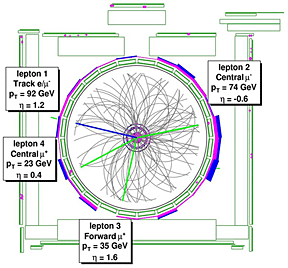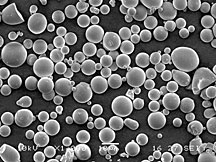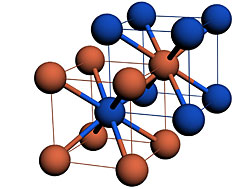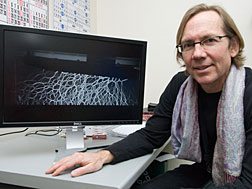| Research
|
|
|||||||||||||||||||||||||||||
|
Check out the joint Fermilab/SLAC publication symmetry.
|
New nanomaterial zaps
|
 |
|---|
Initial solution with nanoparticles. (left) Removal of nanoparticles from solution 10 seconds after magnet is introduced. (center) No change even after magnet moved farther from solution. (right) |
Researchers at Pacific Northwest National Laboratory combined iron oxide nanoparticles with dimercaptosuccinic acid, or DMSA, to create a highly dispersible sorbent that binds to the metals and can be isolated with a magnet.
"We took a method developed for the production of materials for protein detection and moved it into environmental remediation applications," said co-principal investigator Marvin Warner.
The rust-colored nanoparticles look like the finest ground black pepper and have a surface area of 1,227 square feet (114 square meters) per gram for capturing toxic metals. Mercury, silver, lead, cadmium and thallium bind to the free sulfur on the DMSA strands, while arsenic binds to the iron oxide. A strong magnet can separate the metal-laden particles from the solution in about one a minute.
Scientists used river water, groundwater and seawater, plus human blood and plasma, loaded with toxic soft metals to compare the characteristics of the nanoparticles to other sorbents.
"The DMSA-modified particles removed 30 times more mercury than conventional resin-based sorbents," Warner said. The particles also removed 99 percent of lead from a solution containing one milligram per liter of the metal. The resulting liquid was well below the Environmental Protection Agency limit of 0.015 Mg/L for lead in drinking water.
The research team included scientists from PNNL, the University of Oregon and Chulalongkorn University in Bangkok, Thailand. Investigations now focus on the nanoparticles' ability to detect lower levels of contaminants in complex samples, such as urine, saliva and sea water.
Grants from the National Institutes of Health and PNNL's Homeland Security Initiative funded the research, which was conducted in the Department of Energy's Environmental Molecular Sciences Laboratory, a national scientific user facility located at PNNL.
Submitted by DOE's
Pacific Northwest
National Laboratory





